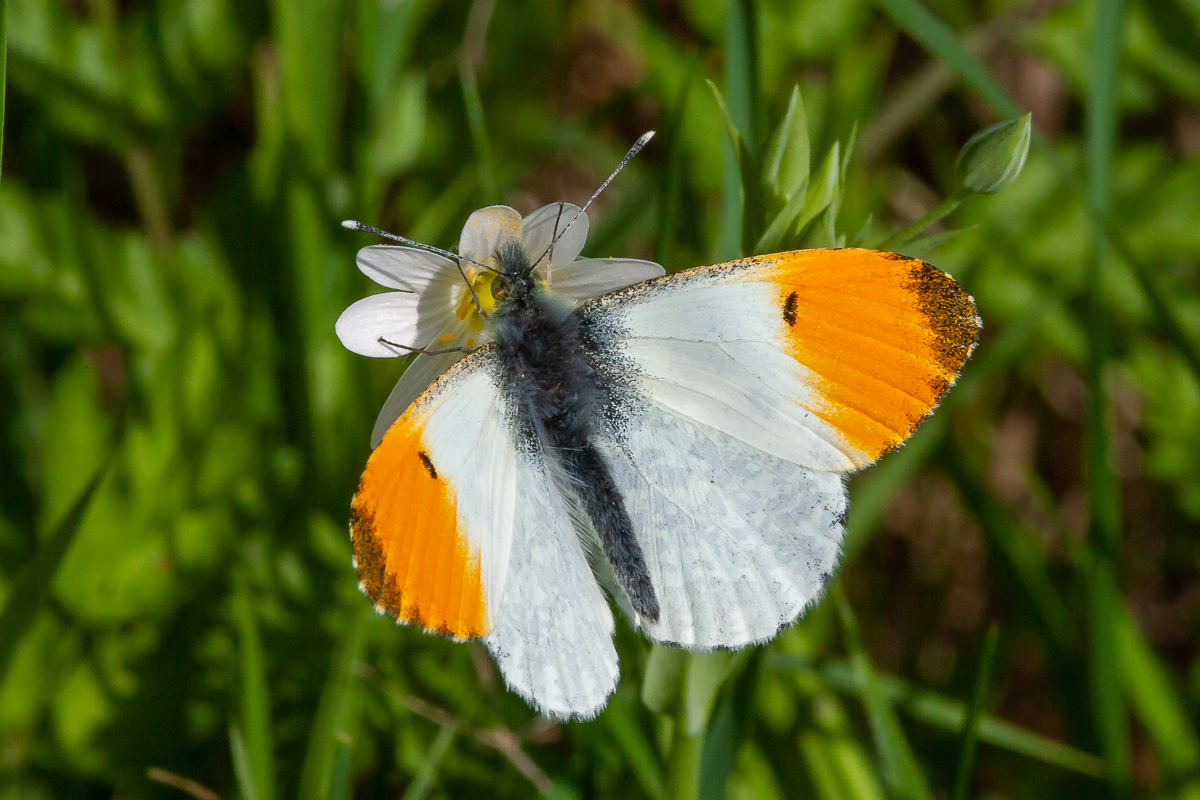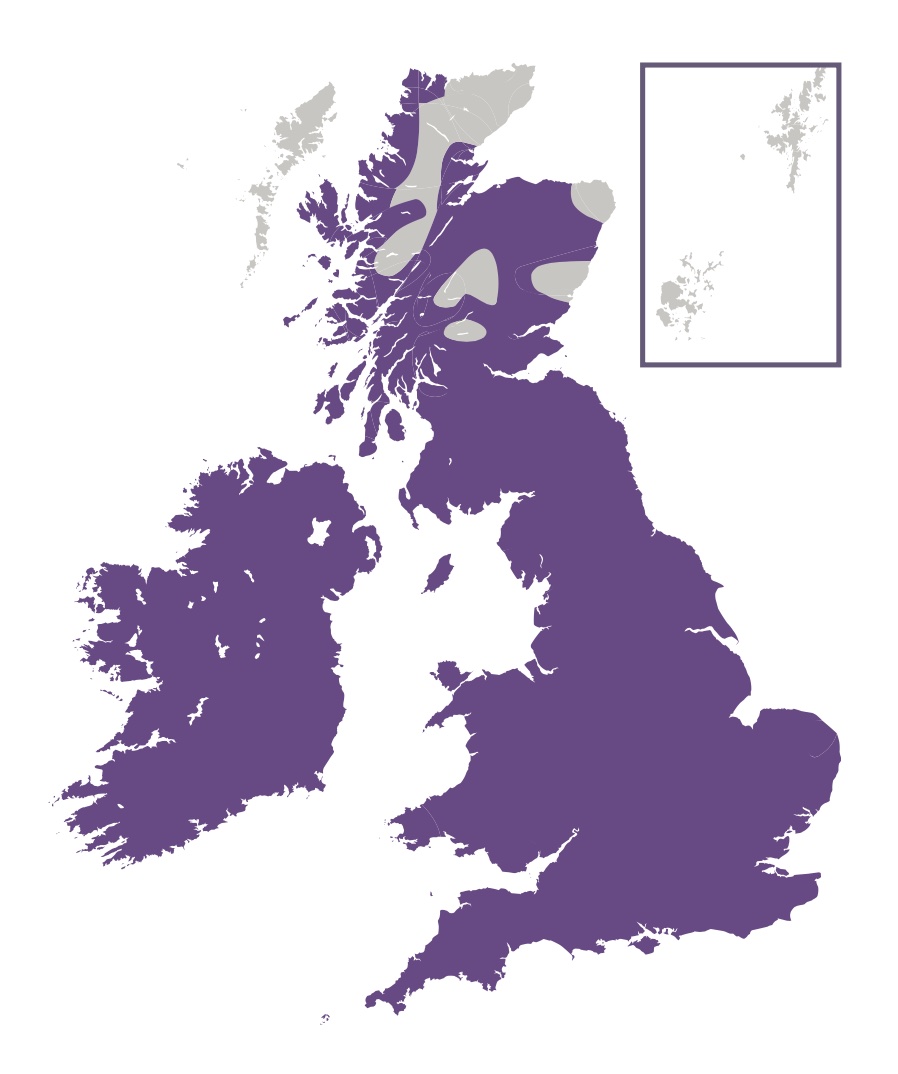
Photo © Peter Eeles
The Orange-tip is a true sign of spring, being one of the first species to emerge that has not overwintered as an adult. The male and female of this species are very different in appearance. The more-conspicuous male has orange tips to the forewings, that give this butterfly its name. These orange tips are absent in the female and the female is often mistaken for one of the other whites, especially the Green-veined White or Small White. This butterfly is found throughout England, Wales and Ireland, but is somewhat-local further north and especially in Scotland. In most regions this butterfly does not form discrete colonies and wanders in every direction as it flies along hedgerows and woodland margins looking for a mate, nectar sources or foodplants. More northerly colonies are more compact and also more restricted in their movements.
Males are more-often noticed than females, largely due to the highly-visible orange splashes seen as the male butterfly flits along. It is believed that the orange tips of the male are an example of warning colouration, indicating that the butterfly is not particularly palatable to predators - a result of mustard oils that have accumulated in the body from the larval foodplant. The male is also the more-active of the two sexes as it searches out a mate and can be seen flying for long periods without ever stopping to rest or nectar. The female, on the other hand, is usually more concerned with egg-laying and, as a consequence, is often found in the vicinity of foodplants. Her more-secretive behaviour may also explain why she does not exhibit the warning colouration present in the male.
Both sexes have an amazing underside pattern of green blotches formed by a combination of yellow and black scales. When at rest on a flower head of the foodplant this butterfly so well camouflaged that an adult resting just a few feet away can easily be missed, even by an experienced observer.
When searching out suitable plants on which to lay, the female will initially locate a plant by sight before alighting on the plant and tasting it with her feet. If the plant is suitable, a single egg is laid on a flower stalk. Eggs are laid singly for good reason - the larvae are cannibalistic. As a result, it is uncommon to find more than one egg per plant and it is believed that the female is able to detect eggs that have already been laid.

The species has a wide range of habitats which include country lanes, hedgerows, riverbanks, woodland margins and rides, and damp meadows. The species will also turn up in gardens.
Adults feed primarily on Bluebell (Hyacinthoides non-scripta), brambles (Rubus spp.), Bugle (Ajuga reptans), Cuckooflower (Cardamine pratensis), dandelions (Taraxacum spp.), Garlic Mustard (Alliaria petiolata), Greater Stitchwort (Stellaria holostea), Ground-ivy (Glechoma hederacea), hawkweeds (Hieracium spp.), Ragged-Robin (Silene flos-cuculi), Red Campion (Silene dioica) and vetches (Vicia spp.).
The primary larval foodplants are Cuckooflower (Cardamine pratensis) and Garlic Mustard (Alliaria petiolata). Charlock (Sinapis arvensis), Dame's-violet (Hesperis matronalis), Hairy Rock-cress (Arabis hirsuta), Hedge Mustard (Sisymbrium officinale), Honesty (Lunaria annua), Large Bitter-cress (Cardamine amara), Turnip (Brassica rapa ssp. rapa) and Winter-cress (Barbarea vulgaris) are also used.
